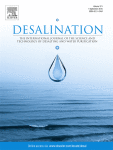The editor of Desalination has retracted a paper that plagiarized from another article published in the same journal six years earlier. The papers describe desalination systems, of course.
This retraction happened on a relatively quick timeline: The paper, “An integrated optimization model and application of MEE-TVC desalination system,” was published online in June, and pulled in January.
Here’s the retraction note:
This article has been retracted at the request of the Editor-in-Chief.
The authors have plagiarized part of a paper that had already appeared in Desalination, A.O. Bin Amer, Development and Optimization of ME-TVC Desalination System, Vol 249/3 (2009), 1315–1331 (http://dx.doi.org/10.1016/j.desal.2009.06.026). One of the conditions of submission of a paper for publication is that authors declare explicitly that their work is original and has not appeared in a publication elsewhere. Re-use of any data should be appropriately cited. As such this article represents a severe abuse of the scientific publishing system. The scientific community takes a very strong view on this matter and apologies are offered to readers of the journal that this was not detected during the submission process.
Of course, the main question is: How could a journal not spot a plagiarism that stemmed from one of its own papers? According to a spokesperson for Elsevier, which publishes Desalination:
This case is understandable: the journal receives 2,500 submission a year, the papers were published 6 years apart, and the plagiarism software that the publisher uses, CrossCheck, albeit very useful, does not give absolute answers about the presence or absence of plagiarism. For example it only highlights text plagiarism, not figures or all equations.
The Plagiarism Detection page on Elsevier’s website explains how CrossCheck is used by its journals, including Desalination:
All new submissions to many Elsevier journals are automatically screened using CrossCheck within the editorial system. Editors may also choose to run a similarity report at any other point during the review process or post-publication.
This isn’t the first time we’ve reported on journals who catch plagiarism that hits close to home. The same thing happened to an astrophysics journal, and we saw another case of it in Scientia Horticulturae in 2013, for instance — another Elsevier journal.
The authors works at Dalian University of Technology in China, according to the paper. We reached out to the journal and the corresponding author, Yihui Zhou, for more information. We were unable to find contact information for Lu Shuai (first author) or Zhen Cai (last author).
The paper has been cited once, according to Thomson Reuters Web of Science.
Like Retraction Watch? Consider making a tax-deductible contribution to support our growth. You can also follow us on Twitter, like us on Facebook, add us to your RSS reader, sign up on our homepage for an email every time there’s a new post, or subscribe to our new daily digest. Click here to review our Comments Policy.
